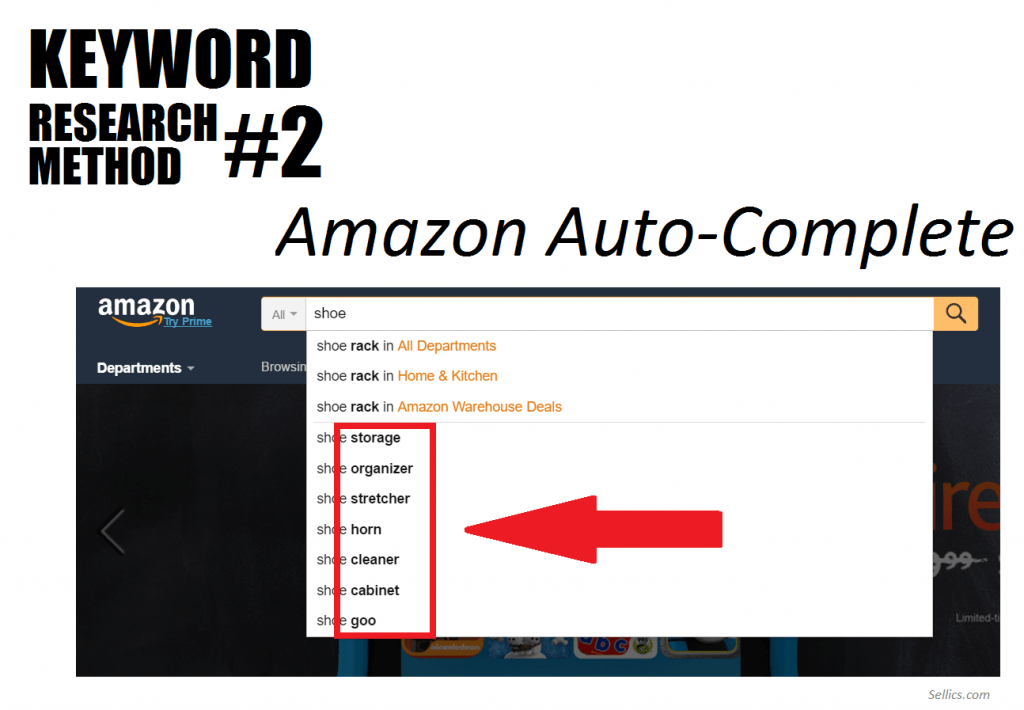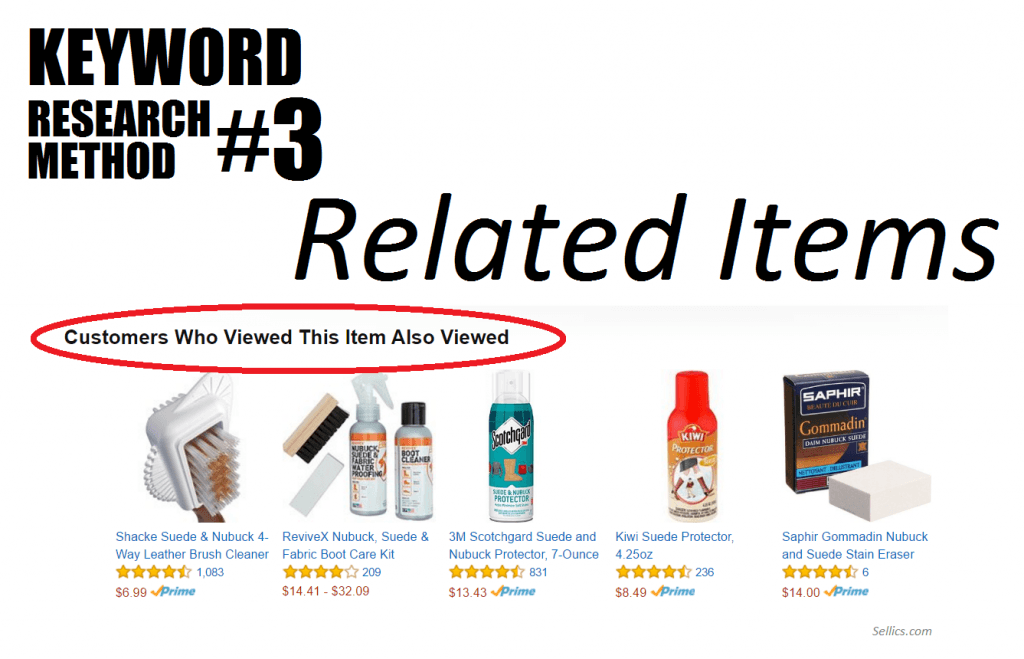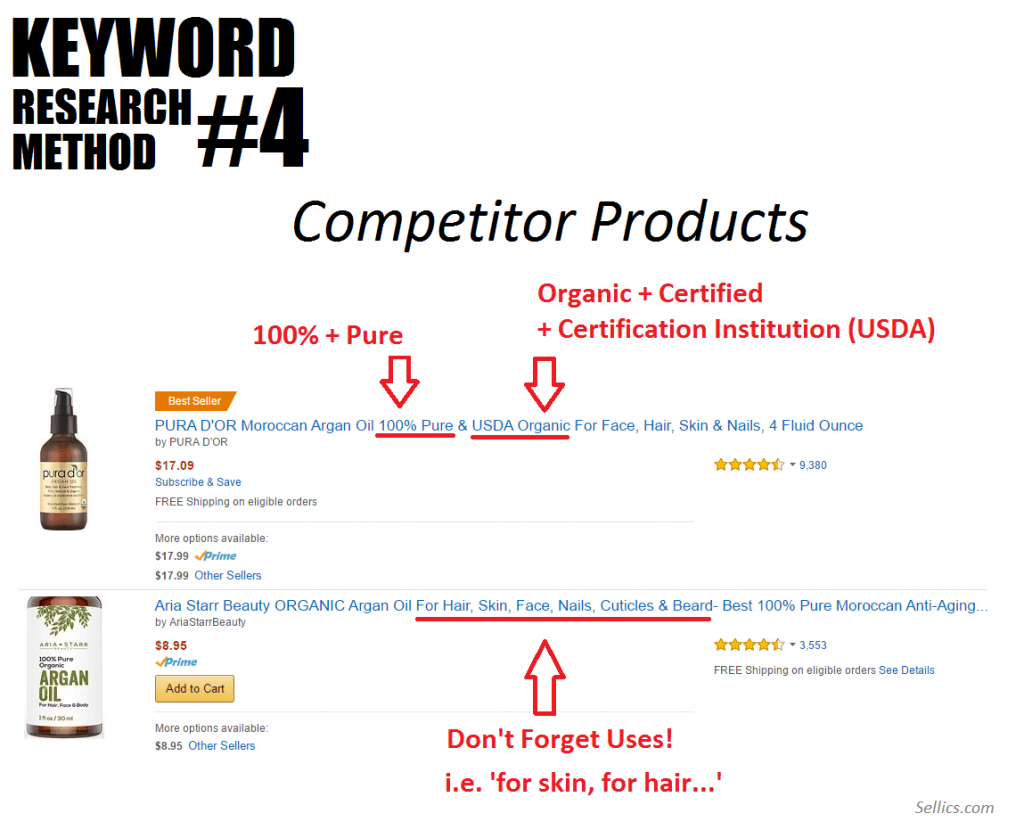
Amazon Listing Optimization: 6 Tips for Keyword Research
Angela Yuan, July 17, 2016
Forgetting an important keyword is like forgetting your wallet on a park bench – for quite some time you’ll be regretting that stupid move which led to lost money. Because if you forget any keywords in your Amazon product listing, then it won’t be found via search! Use these six thorough keyword research methods to make sure your listing is easily found on Amazon, i.e. as visible as possible.
What is Keyword Research?
An integral part of Amazon search optimization is keyword research, which entails searching for all relevant keywords for a product. Relevant keywords would be all search terms (or ‘key’ words/terms) that a customer would use in order to find your product on Amazon.
One customer, for example may be looking for an exercise ball by typing in ‘exercise ball’ into the search field, and another might type in ‘25” fitness ball‘. And others might not have a specific product in mind when they start searching Amazon: They might be looking for a product that they’d use in a certain situation, such as ‘office chair good back posture’ or ‘sports equipment for the office’. An exercise ball could be the solution here.
How Does Keyword Research Increase My Sales on Amazon?
It’s very important to identify all relevant keywords with the help of an Amazon keyword tool, because products will only be shown in Amazon’s search results if those products contain all the keywords that a customer typed into the search query. If you’ve overlooked a keyword (for example ‘fitness ball’), then your product doesn’t stand a chance of appearing in the search results for this missing keyword - and missing out on that sale is tantamount to leaving money on a park bench.
The goal of keyword research is to make a list of all keywords that are relevant for a certain product. By placing all these keywords in the product listing text, keyword research basically leads to the fact that more customers will see your product, click on it and ultimately buy it.
How to Find Keywords for Your Amazon Product: Systematically
It’s imperative to be systematic when doing keyword research so that you don’t overlook anything and keywords aren’t ‘lost’. Grouping keywords into two different categories will help you be thorough and systematic.
Keywords can generally be grouped into two categories that will help you to search systematically and thoroughly: primary and secondary keywords.
Example of primary keywords
These are keywords that describe the core product: its identification and description. Continuing with the example above, these primary keywords would be ‘fitness ball’ and ‘gymnastic ball’ or even ‘balance ball chair’. More general keywords would be ‘fitness equipment’ or ‘sports equipment’.
Example of secondary keywords
These keywords can be distributed into various categories which can differ according to product. One or more of these words can be used when searching for the primary keywords. Here, this typically applies to words that concern a certain target group or type of person (women’s, men’s), a place or type of use (therapy, office, outdoor), size (large, small, 26”), appearance or material (synthetic, blue, grooved) or other product characteristics (with air pump, batteries included, etc.).
As part of your keyword research, you have to identify primary and secondary keywords and their relevant combinations, so that you can finally add them to your product listing. There are various techniques and tools that will help you to come up with a set of relevant keywords step by step.
6 Techniques and Tools for Thorough Amazon Keyword Research
1. Personal experience
It sounds quite clichéd to ‘put yourself in your customers’ shoes’, but it’s (figuratively) still good advice. Spend some time thinking about when they would buy your product, what kinds of questions they would have – even what kind of items they would buy instead of your product (either as a replacement or from a competitor).
Beyond whatever keywords come to mind, try clicking around Reddit or Facebook groups to see what people are talking about concerning your product; Maybe they often use a brand name (e.g. Kleenex) instead of the generic name (facial tissues). Or, you might find an acronym / abbreviation that is commonly used in the community.

2. Amazon autocomplete
Amazon itself can even be used for keyword research. If you tap a few letters in the search box, products automatically appear as suggestions. This autocomplete function is not arbitrarily generated, rather, Amazon displays the terms search for most. So, it makes sense that autocomplete actually provides you with a set of legitimate keywords.
Tip: This method requires a bit of patience and refinement. Be systematic and go slowly. Follow the name of your product with the letters of the alphabet, A-Z, one at a time, and note what arrives – see if there’s a pattern or a strong keyword match for your product.
Additionally, the suggested categories can give you an idea about which other categories to list your product in, so that it’s seen by more shoppers.

3. Amazon's suggested / related items
Remember that your product will be shown for search terms that you include in your backend, bullet points and product description.
The line of thought here is that if customers are buying shoe cleaning products as well as shoe brushes (and usually at the same time), then you could include this keyword in a couple discreet areas of your listing.
Remember: Only do this when you have some extra space for keywords! Your main strategy should be to cover keywords that describe your product, synonyms, misspellings, etc.

4. Competitor products
Another source of inspiration for keyword research that shouldn’t be underestimated is your competitor's’ products. This is very similar to our keyword research method #3 that we listed above. In the title and the product information of other products are keywords which you haven’t thought of, but your competitors have!
Even just skimming through product titles can give you some keywords you’ve forgotten that are synonymous (e.g. pure, 100%, genuine, real). And especially product uses should be included, i.e. ‘for hair, for beard, for skin’.

5. Thesaurus
It’s probably the most underused resource in keyword research for Amazon SEO and even Google. Thesauri (yes, plural of ‘thesaurus’) are especially useful when it comes to products which might have more than one name, or be used in a different context, or have a different name in British English.
When using a thesaurus for keyword research, remember to:
Use common misspellings of the synonyms in your Amazon listing (preferably in the backend search termsUse plural and singular forms of synonymsLook for words that describe the item, e.g. round, rotund, obtuse, spherical
Synonyms for “iPhone 6 Phone Case” will of course not be found using a thesaurus – but what if you’re selling handkerchiefs? You might want to consider neckerchiefs, serviettes, scarfs, hankies or even tissues as keywords.
6. Keyword research tools (like Sonar)
Especially if you have more than one product line, using a keyword research tool to help you with your Amazon SEO will be indispensable.
As you can see from the video above, we have a keyword research tool built right into the software. You can skip steps 2 and 3 by using our tool to filter for competitor’s and related products. This will save you a considerable amount of time and is less nerve wracking than clicking around on Amazon for hours.
Tip: Try Sonar, the free Amazon keyword research tool from Perpetia
Sonar is a keyword research tool for Amazon that will help you even at the earliest stages of your keyword research, i.e. brainstorming. Simply enter in a few keywords to get started and let the tool suggest more for you. Select the keywords you like, add them to your list of keywords to get suggestions for, and then even more will be generated by the tool! Check out the screenshot below:
The Result of Solid Keyword Research
As a result of your research, you should have a list of keywords that covers all relevant queries from customers. Among that list should be, on one hand, your top keywords that are frequently searched for and reach as many customers as possible. On the other hand, you should have a list of secondary keywords which can be included to boost the number of achievable customers overall, even if they seem too specific or peculiar. This list can then be used for keyword optimization and ranking optimization, when you define the identified keywords for your products so that they are more commonly found, clicked and purchased.
To get started or learn more about how Perpetua can help you scale your Amazon Advertising business, contact us at hello@perpetua.io